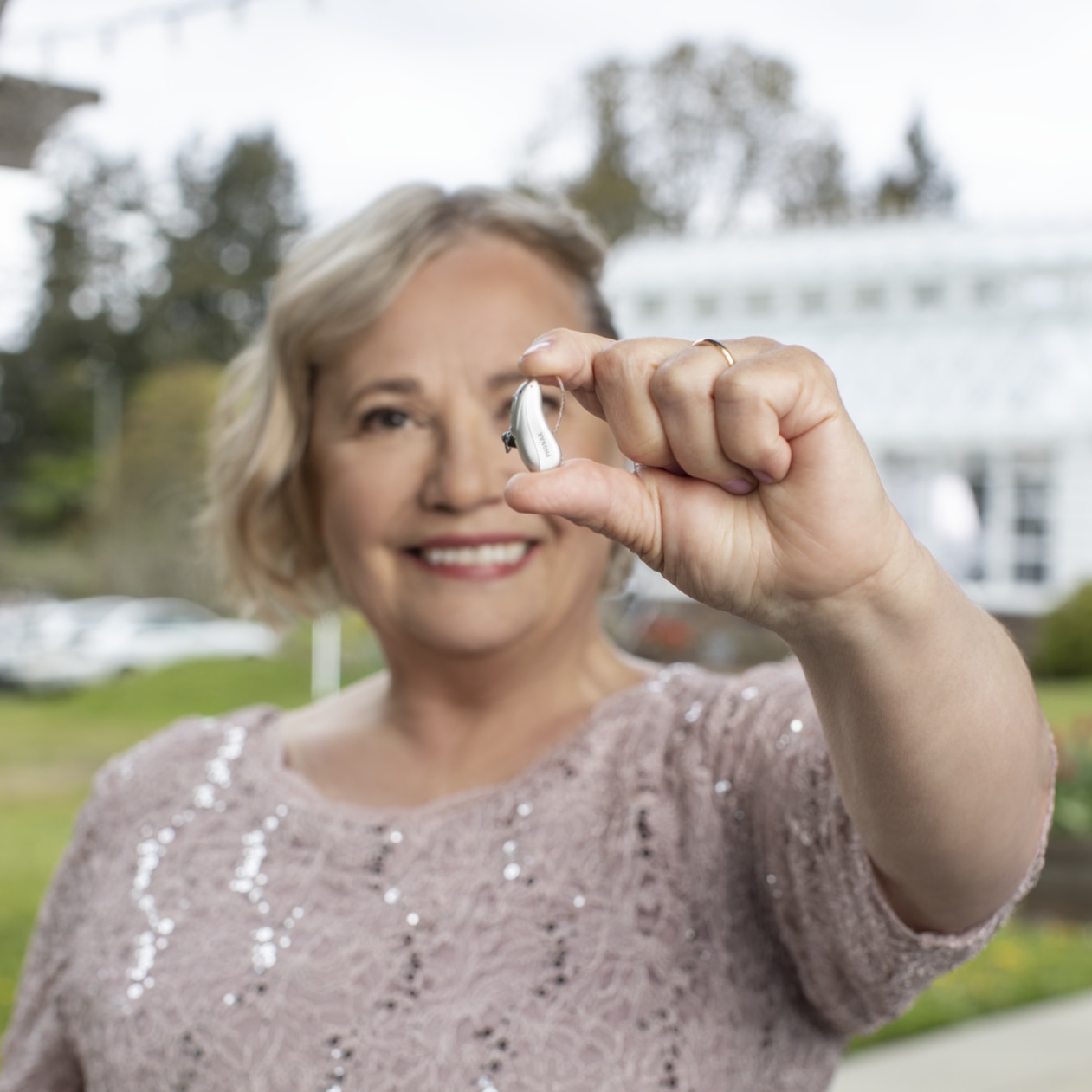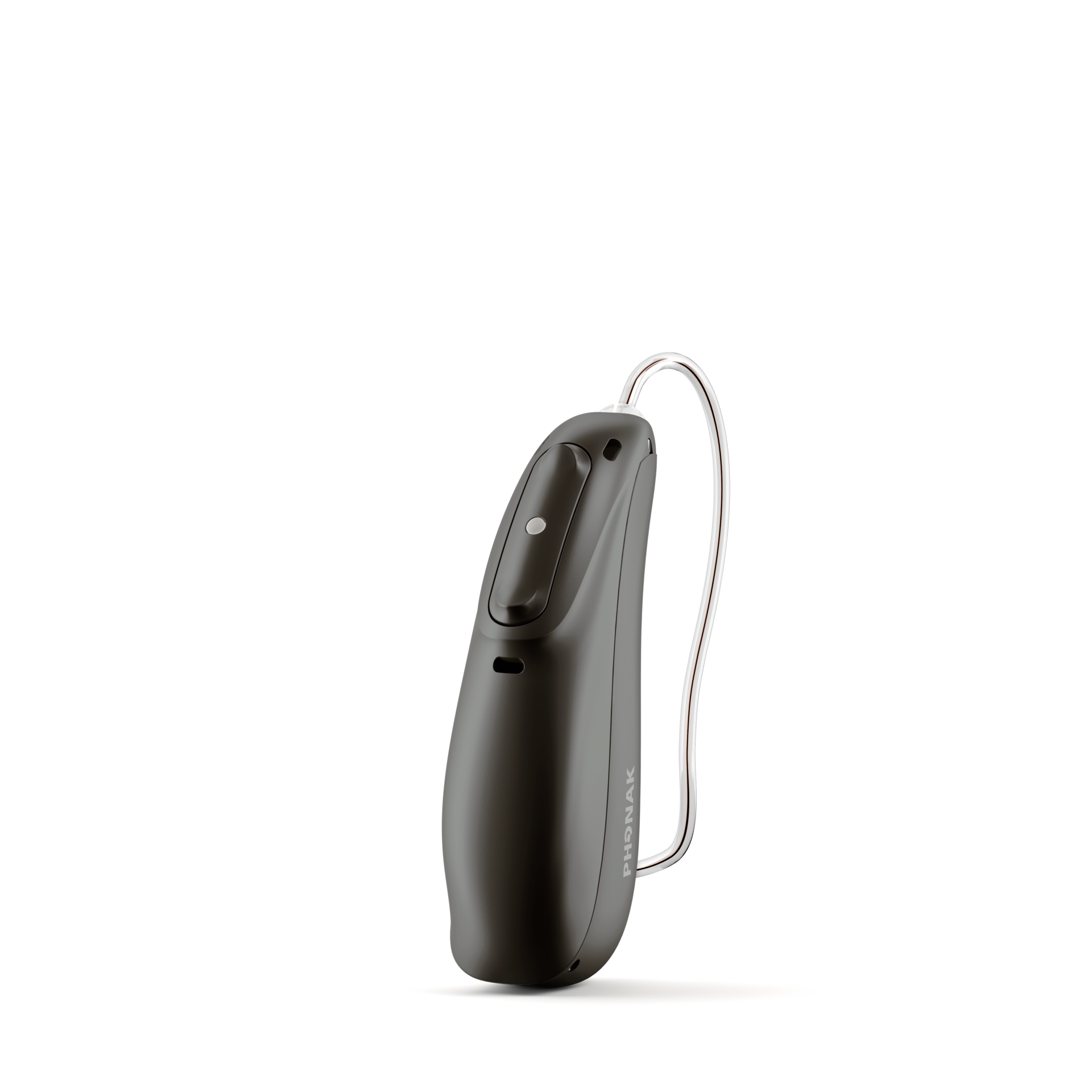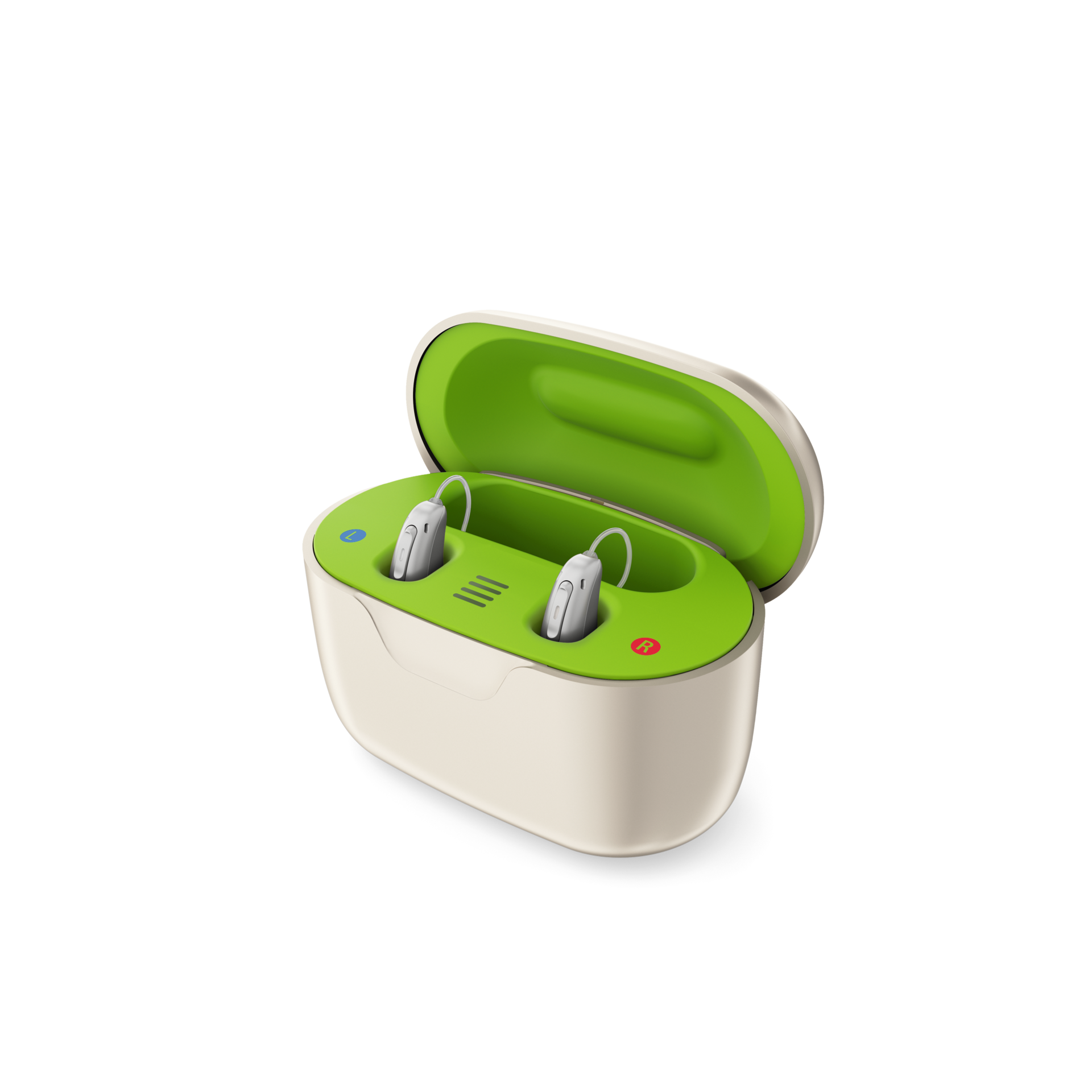Notes de bas de page
* Jusqu’à 50 cm
** Le calcul de 800 piles est basé sur une moyenne de 5 jours par pile, avec une espérance de vie de l’aide auditive de 5 à 6 ans.
*** 16 heures d’autonomie avec une seule charge, incluant 8 heures d’écoute quotidienne, 4 heures de diffusion Bluetooth et 4 heures de diffusion TV.
L’autonomie de la pile peut être légèrement réduite en cas d’utilisation avec l’écouteur ActiveVent.
1. Appleton, J. (2020) AutoSense OS 4.0 - significantly less listening effort and preferred for speech intelligibility. Phonak Field Study News consulté sur www.phonak.com/evidence en février 2022.
Latzel, M et Hobi, S (2022) Receiver with mechanical vent provides benefit of open and closed acoustics for better speech understanding in noise and naturalness of own voice perception. Phonak Field Study News en cours de préparation. Publication prévue pour mi-2022.
Thibodeau L. M. (2020) Benefits in Speech Recognition in Noise with Remote Wireless Microphones in Group Settings. Journal of the American Academy of Audiology, 31(6), 404–411.
2. Woodward, J et Latzel, M (2022) New implementation of directional beamforming configurations show improved speech understanding and reduced listening effort. Phonak Field Study News en cours de préparation. Publication prévue fin 2022.
3. Appleton, J. (2020) AutoSense OS 4.0 - significantly less listening effort and preferred for speech intelligibility. Phonak Field Study News consulté sur www.phonak.com/evidence en février 2022.
4. Hornsby, B.W.Y. (2013). The effects of hearing aid use on listening effort and mental
fatigue associated with sustained speech processing demands. Ear and Hearing, 34(5), 523–534. https://doi.org/10.1097/AUD.0b013e31828003d8
Picou, E.M., Ricketts, T.A., et Hornsby, B.W.Y. (2013). How hearing aids, background noise, and visual cues influence objective listening effort. Ear and Hearing, 34(5), e52–e64. https://doi.org/10.1097/AUD.0b013e31827f0431
Pichora-Fuller, M.K., et Singh, G. (2006). Effects of Age on Auditory and Cognitive Processing: Implications for Hearing Aid Fitting and Audiologic Rehabilitation. Trends in Amplification, 10(1), 29–59.https://doi.org/10.1177/108471380601000103.
5. Vercammen, C., Ferguson, M., Kramer, S.E., et al. (2020). Well-Hearing is Well-Being. Hearing Review, 27(3), 18-22. Disponible sur https://www.hearingreview.com/hearing-loss/patient-care/counseling-education/well-hearing-is-well-being, consulté le 1er juin 2020.
6. Nilsson, M. et Omisore, D., (2017). The Phonak rechargeable solution: Part 2. Phonak Field Study News, consulté sur www.phonak.com/evidence le 19 février 2018.















